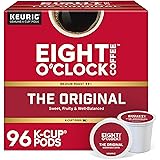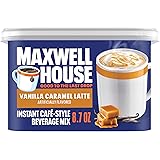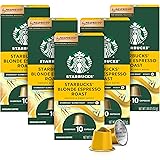Are you craving the robust kick of an espresso shot but lack the specialized equipment of a professional barista? Many coffee enthusiasts seek that potent jolt without the expense or complexity of a traditional espresso machine. The video above demonstrates a surprisingly effective hack: crafting a concentrated espresso-like beverage using instant coffee. While not a true espresso in the technical sense, this method provides an excellent alternative for those prioritizing convenience and potency. It’s an ingenious solution for obtaining a strong coffee base, ideal for various coffee creations or for simply enjoying a robust, concentrated brew.
Crafting an Instant Espresso Shot: Bridging Convenience with Potency
The quest for a quick, intense coffee experience often leads us to innovative solutions. Our accompanying video offers a straightforward method for making a compelling espresso with instant coffee, a technique that distills strong flavors into a small, powerful serving. This approach circumvents the need for high-pressure extraction, instead leveraging the inherent solubility of instant coffee granules. However, understanding the nuances of this method, from the chemical properties of instant coffee to the physiological effects of caffeine, can elevate your DIY brew from a mere substitute to a genuinely satisfying drink.
Understanding the “Instant Espresso” Phenomenon: Beyond Traditional Extraction
True espresso is defined by specific brewing parameters: approximately 9 bars of pressure, precise temperature control (around 90-96°C), and finely ground coffee, yielding a concentrated shot topped with a rich, reddish-brown crema. Instant coffee, by contrast, undergoes a prior brewing process, followed by dehydration, typically through spray-drying or freeze-drying, to create soluble granules. When rehydrated with warm water, these granules dissolve rapidly, releasing their pre-extracted coffee solids. Consequently, an instant coffee espresso is not an extraction in the traditional sense, but rather a re-constitution of highly concentrated coffee solids into a minimal volume of water, mimicking the intensity profile of espresso.
The physical chemistry behind instant coffee’s dissolution is quite fascinating. The porous structure of freeze-dried granules, for instance, allows for swift water penetration and solute release, a process governed by surface area and temperature. While traditional espresso brewing extracts a complex array of soluble solids, oils, and gases under pressure, instant coffee essentially bypasses this by pre-extracting and then concentrating these elements. This distinction is crucial for managing expectations regarding flavor profile and the absence of a genuine crema, which is a hallmark of pressure-extracted espresso, formed by emulsified oils and CO2 trapped within the brew.
Navigating Your Caffeine Tolerance: A Crucial Consideration for Instant Espresso
As highlighted in the video, a primary caution when enjoying a homemade espresso with instant coffee is your individual caffeine tolerance. While a standard 30ml shot of traditional espresso typically contains around 63mg of caffeine, the caffeine content in a teaspoon of instant coffee can vary significantly, ranging from 30mg to over 90mg, depending on the brand, bean varietal (Robusta often has higher caffeine than Arabica), and processing method. Consuming a “triple espresso” made with instant coffee, as suggested in the tutorial, could mean ingesting anywhere from 90mg to 270mg of caffeine in a single serving, a substantial amount for many individuals.
Individual responses to caffeine are highly variable, influenced by genetic factors such as the CYP1A2 enzyme, which metabolizes caffeine, and adenosine receptor sensitivity. Some individuals are “fast metabolizers” and can consume multiple shots without adverse effects, while “slow metabolizers” may experience jitters, anxiety, or insomnia from even a single serving. It is always prudent to begin with the smallest recommended dose, as the video wisely advises, and observe your body’s response over time. Monitoring your intake ensures you enjoy the stimulating effects without discomfort or overstimulation of the central nervous system.
Optimizing Your DIY Instant Espresso: Precision in Preparation
Achieving the best possible “instant espresso” involves more than simply mixing coffee and water; precision in the preparation process significantly impacts the final product. The video specifies using 1/2 cup of warm water and three heaping spoons of instant coffee for a triple shot, with a direct correlation of “1 tsp of coffee dissolved in 1 shotglass of water = 1 espresso shot.” This precise ratio is critical for achieving the intense concentration characteristic of an espresso. Varying this ratio, for example by increasing the coffee quantity slightly, can yield an even more robust flavor, albeit with a corresponding increase in caffeine density.
Water temperature also plays a vital role in dissolution kinetics and flavor extraction from instant coffee. While the video suggests “warm water,” using water that is too hot (boiling) can potentially scorch the pre-extracted coffee solids, resulting in a bitter, over-extracted taste profile. Conversely, water that is too cool will hinder complete dissolution, leaving undissolved granules and a weaker, less potent brew. An optimal temperature range, similar to that used for traditional drip coffee (around 90-96°C, but allowed to cool slightly if directly from a boil), ensures efficient and complete solubility, releasing the full spectrum of flavors and aromas without introducing undesirable bitterness. Rapid and thorough stirring is also essential to ensure all soluble solids are evenly dispersed, preventing stratification and guaranteeing a consistent taste in every sip.
The Elusive Crema and Enhancing Texture
One of the defining characteristics of a true espresso shot is its rich, velvety crema, a golden-brown foam composed of emulsified coffee oils, proteins, and sugars, stabilized by carbon dioxide gas. This crema is a direct result of the high-pressure extraction process, which is inherently absent in making instant espresso. Therefore, attempting to replicate a genuine crema with instant coffee is largely futile; the physical conditions for its formation simply do not exist. However, that does not mean one cannot achieve a pleasant, foamy texture that visually and texturally approximates some aspects of crema.
To enhance the textural experience of your instant coffee shot, vigorous stirring or using a small milk frother can introduce air and create a layer of microfoam. Rapid agitation with a spoon, especially when the coffee is initially mixed, can trap air bubbles, leading to a superficial, light foam. For a more consistent and appealing foam, a handheld electric milk frother can be employed after dissolution, creating a head of small, stable bubbles. While this will not possess the same complex flavor compounds or stability as true crema, it significantly improves the mouthfeel and presentation, making your instant coffee shot a more satisfying sensory experience.
The Impact of Instant Coffee Quality on Your Espresso Alternative
The quality of your instant coffee fundamentally dictates the flavor profile and overall enjoyment of your homemade “espresso.” Not all instant coffees are created equal; they vary significantly in their base bean varietals (Arabica, Robusta, or blends), processing methods (spray-dried vs. freeze-dried), and the care taken during initial brewing and dehydration. Premium freeze-dried instant coffees, often derived from 100% Arabica beans, typically offer a more nuanced, aromatic, and less bitter flavor profile, closely resembling that of freshly brewed coffee. Conversely, cheaper spray-dried varieties, frequently containing a higher percentage of Robusta beans, can possess a more rubbery or acrid taste, which will be amplified in a concentrated instant espresso shot.
Investing in a high-quality instant coffee is analogous to selecting premium beans for a traditional espresso machine; it forms the very foundation of your drink. Brands that emphasize single-origin beans or specific roasting profiles often translate these qualities into their instant formats, providing a richer body and more complex notes of chocolate, nuts, or even fruit. Experimenting with different instant coffee brands allows you to discover which provides the most desirable balance of flavor, acidity, and bitterness for your palate, significantly elevating your instant coffee espresso experience and making it a more refined beverage.
Beyond the Shot: Versatile Applications for Your Instant Espresso
While the video primarily focuses on creating the instant espresso shot for direct consumption, its true versatility shines through in its application as a potent coffee base for a myriad of other beverages. The concentrated nature of this brew makes it an ideal foundation for various coffeehouse-style drinks, offering a quick and efficient way to build complex flavors without needing an actual espresso machine. Think of it as a robust coffee concentrate, ready to be transformed into your favorite concoctions.
For instance, to craft an instant latte, simply combine your hot instant espresso shot with steamed or frothed milk and a touch of sweetener. An instant cappuccino can be achieved by adding frothed milk and a thin layer of foam on top. Cold applications are equally straightforward; pour your cooled instant espresso over ice, add milk or a milk alternative, and perhaps a pump of flavored syrup for an iced latte. You can even create an instant affogato by pouring a hot shot over a scoop of vanilla ice cream, or integrate it into coffee-based cocktails for an intensified coffee flavor. The potential for culinary creativity with this powerful making instant espresso method is virtually limitless, transforming a simple instant coffee into a dynamic ingredient for your home barista endeavors.







